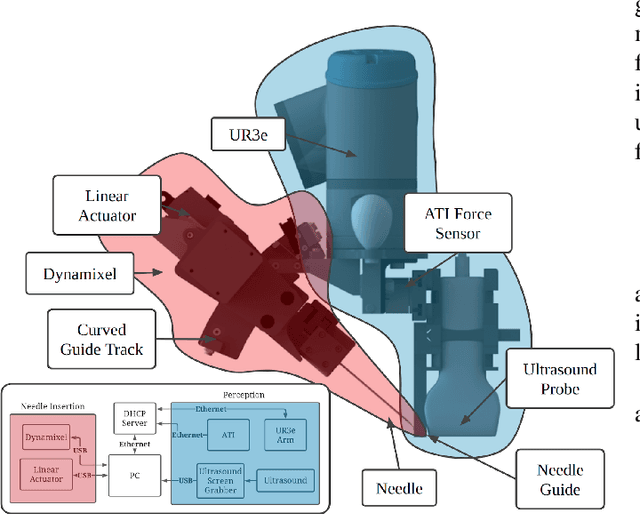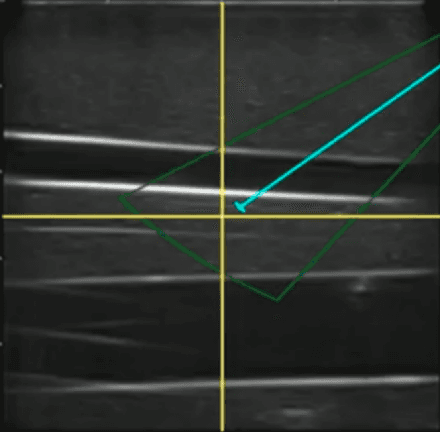Michael R. Pinsky
Automatic Cannulation of Femoral Vessels in a Porcine Shock Model
Jun 17, 2025Abstract:Rapid and reliable vascular access is critical in trauma and critical care. Central vascular catheterization enables high-volume resuscitation, hemodynamic monitoring, and advanced interventions like ECMO and REBOA. While peripheral access is common, central access is often necessary but requires specialized ultrasound-guided skills, posing challenges in prehospital settings. The complexity arises from deep target vessels and the precision needed for needle placement. Traditional techniques, like the Seldinger method, demand expertise to avoid complications. Despite its importance, ultrasound-guided central access is underutilized due to limited field expertise. While autonomous needle insertion has been explored for peripheral vessels, only semi-autonomous methods exist for femoral access. This work advances toward full automation, integrating robotic ultrasound for minimally invasive emergency procedures. Our key contribution is the successful femoral vein and artery cannulation in a porcine hemorrhagic shock model.
* 2 pages, 2 figures, conference
Toward Robotically Automated Femoral Vascular Access
Jul 06, 2021



Abstract:Advanced resuscitative technologies, such as Extra Corporeal Membrane Oxygenation (ECMO) cannulation or Resuscitative Endovascular Balloon Occlusion of the Aorta (REBOA), are technically difficult even for skilled medical personnel. This paper describes the core technologies that comprise a teleoperated system capable of granting femoral vascular access, which is an important step in both of these procedures and a major roadblock in their wider use in the field. These technologies include a kinematic manipulator, various sensing modalities, and a user interface. In addition, we evaluate our system on a surgical phantom as well as in-vivo porcine experiments. These resulted in, to the best of our knowledge, the first robot-assisted arterial catheterizations; a major step towards our eventual goal of automatic catheter insertion through the Seldinger technique.
Detecting Patterns of Physiological Response to Hemodynamic Stress via Unsupervised Deep Learning
Nov 12, 2019



Abstract:Monitoring physiological responses to hemodynamic stress can help in determining appropriate treatment and ensuring good patient outcomes. Physicians' intuition suggests that the human body has a number of physiological response patterns to hemorrhage which escalate as blood loss continues, however the exact etiology and phenotypes of such responses are not well known or understood only at a coarse level. Although previous research has shown that machine learning models can perform well in hemorrhage detection and survival prediction, it is unclear whether machine learning could help to identify and characterize the underlying physiological responses in raw vital sign data. We approach this problem by first transforming the high-dimensional vital sign time series into a tractable, lower-dimensional latent space using a dilated, causal convolutional encoder model trained purely unsupervised. Second, we identify informative clusters in the embeddings. By analyzing the clusters of latent embeddings and visualizing them over time, we hypothesize that the clusters correspond to the physiological response patterns that match physicians' intuition. Furthermore, we attempt to evaluate the latent embeddings using a variety of methods, such as predicting the cluster labels using explainable features.
 Add to Chrome
Add to Chrome Add to Firefox
Add to Firefox Add to Edge
Add to Edge